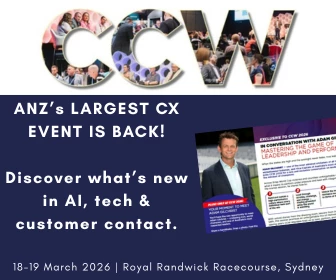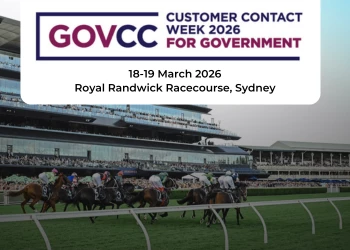Sheltering Customer Relationships from a Hurricane; Chase Wins, LivingSocial Tone Deaf
Add bookmarkThe stressful challenge of preparing for an impending natural disaster would overwhelm even in a world that allowed individuals to put their lives completely on hold as they readied for the storm.
And the world in which we live is not that idealistic.
Beyond worrying about keeping family members, friends and pets safe from harm and treasured property safe from damage, those tasked with disaster preparation must also consider how their external responsibilities will be impacted. Will they have access to work? Will they be able to take care of unresolved issues with town government? Will they be able to take care of any transactional issues, such as important product returns and subscription (and prescription) renewals? Will they be able to sufficiently manage their bills?
We exist in a global community, and it is unlikely that any disaster will be great enough to stop the world. Sure, stock markets might close, television might be pre-empted for disaster coverage and phone lines might go down, but at the end of the day, life is going to keep moving. And if those unaffected by a storm are moving forward, then those affected, while perhaps not expected to operate at full potential, will need to keep pace.
Society will be sympathetic to those most hurt by a tragedy, but it will not halt its own progression.
The need to focus on the external therefore tragically threatens to make what is truly important—health and safety—a secondary concern.
Oh, you have no power? You are having trouble contacting a family member who was caught in the storm? Worry about that on your own time; during business hours, you better make sure all of your bills are paid! You better make sure you get that assignment across my desk by 5. You better return that defective television before the deadline passes.
Whether because of another company expecting a customer to pay his bills or that customer’s office expecting him to come into the office for work, odds are strong that a disaster-affected customer will have some reason to keep pace with the forward progress of the outside world. And as long as that is the case, no individual brand faces obligation to sympathetically relax policies for customers.
If your office is making you come into work, and you’re going to need to pay your cable bill, then you should have no trouble also paying your credit card bill. I will not extend your deadline.
This logic, of course, requires a completely-transactional view of the customer. If each customer is a faceless, nameless statistic that represents money coming into the business, it makes sense to assure that flow of money is unbroken. The customer is not Jim from Seaside Heights who just lost his home; it is customer #43343 who owes us $500 on the last day of the month.
Since society is not shutting down, we cannot look the other way if that customer does not pay. It’s just business.
But for those brands committed to developing meaningful relationships with customers, that logic cannot stand. Those brands recognize the individuality and humanity of each customer, and so they must also recognize the unique situations and issues that can affect their ability to do business. This brand would see Jim as the gentleman from Seaside Heights who just lost his home rather than as customer #43343. And in managing its relationship with Jim, it must act in accordance with what would create the most favorable situation for Jim.
If strengthening the relationship is the goal, there must be a clear attitudinal shift. Instead of figuring that the customer cannot hate the brand for behaving like others in the marketplace, it should be determining what it takes to earn the customer’s love.
When a hurricane affects a customer, a brand’s demonstration of numbness to that situation is probably not the best way to earn his love. A brand’s recognition that the customer is not presently in a perfect situation is far more likely to increase satisfaction.
Banking on compassion
Consider the difference between how Chase and Bank of America, two of the largest banking institutions, addressed customers as Hurricane Sandy, the most recent cause of natural devastation, approached.
[eventPDF]
On October 28, just before Hurricane Sandy began impacting the mid-Atlantic, Chase alerted customers in New York, New Jersey and Connecticut that they would be exempt from overdraft and late fees until the hurricane had passed on October 31. While not overly sympathetic—does one day after a hurricane really give customers enough time to bounce back—the proactive alert still represented a sign that Chase cared about its customers. It represented that Chase was thinking about its customers and thinking about the fact that with a hurricane coming, the last thing those customers wanted or needed to think about was trouble with their back accounts.
Bank of America, meanwhile, did not respond until the hurricane had passed on October 31. While its relief offering, including credit line increases, overdraft reimbursement and late fee assistance, was more mindful than Chase’s initial offering of the fact that a hurricane’s reign of destruction does not end once the inclement weather passes, it also landed notably out of tune with what a customer should expect.
In order to gain access to the program, customers had to personally contact a banking representative to qualify. So, in addition to giving customers no proactive peace of mind prior to the hurricane hitting, the bank was asking affected customers to actively call—and waste time—qualifying for the relief program. Does that not defeat the entire purpose? If the goal is the peace of mind that comes from allowing customers to focus on more pressing needs than banking, how does requiring them to call or visit a branch achieve that goal?
Is living social(ly) about building relationships...or ruining them?
For as underwhelming as its response was, Bank of America still showed infinitely more respect for its customers than LivingSocial, which completely dropped the ball in the run-up to the destructive Sandy.
On October 29, just as the hurricane was reaching full impact, LivingSocial e-mailed regional customers with a deal for two to stay "overnight on the Jersey Shore." Yes, a resort stay at the same shore that was about to be destroyed beyond recognition…sent to an audience of people who were about to feel the impact of the region’s most devastating natural disaster in decades.
Despite the visible ravaging to the region, that offer is still posted on the LivingSocial website. And that tone-deaf offer was apparently not the only deal LivingSocial presented involving merchants in the affected region.
Forget the customer-centric notion of tailoring an experience to a customer’s individual preferences. In promoting offers in affected regions before, during and after the hurricane, LivingSocial was being downright insensitive to a comically-broad customer segment—people from the mid-Atlantic. The company was so committed to business as usual, and so unsympathetic to the fact that the Hurricane might cause life to temporarily slow down, that it apparently did not even blink about taking off its profit goggles.
Marketers and customer service leaders have executives to whom they must report. Executives have shareholders to whom they must remain accountable. On a superficial level, halting business because some potential customers were affected by a natural disaster is probably not the most appealing decision.
But to the extent that customer relationships are an essential part of a business’ success, the burden is on the business to think about how it relates to customers. How is it crafting an experience of legitimate value for each individual customer? How is it establishing itself as a group to whom the customer wants to spend money?
When a customer is unable to play the role he typically plays in the process, a short-sighted, transactional leader will attempt to force him to do so. He will refuse to get caught up in the intricacies of a situation because that humanity compromises the objectivity of "good business." He will end up asking Hurricane-affected customers to spend precious time calling to qualify for banking relief. He will end up marketing deals for businesses in affected areas to customers who are still being affected.
One focused on the long-term, on the importance of building real relationships with customers, will be aware of who is customers are and what they are presently enduring. That is how you build marketing campaigns that resonate. That is how you create products of value. That is how you deliver a service experience that wins satisfaction.





















